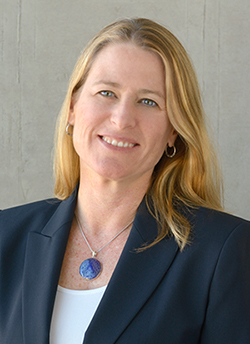Water Innovations
Vision: Innovation propels us to lead the world in transforming how we deliver water resources to proactively meet challenges in an ever-changing environment.
Through our Innovations Program, we encourage testing of forward-thinking ideas. We partner with the community, industry, developers, technology vendors, and others who play key roles in ensuring the long-term sustainability of San Francisco. Water Innovation fits in with our OneWaterSF approach.
Partnership Opportunities
We are focused on the following ideas and projects:
New Technologies and Pilot Testing
- Energy efficient treatment for water reuse applications
- Cost-effective sensors and monitoring for water reuse applications
- Commercially-available water efficient technologies at municipal and decentralized scales
Research Partnerships/programs/water-innovations
- Distribution system effects of blending conventional and alternative supplies
- Strategies for water use efficiency and water reuse
- Brine management
- Intermittent reverse osmosis (RO) use
Project Spotlights
Learn about our projects and the innovators leading them:
Onsite Water Reuse Program
This innovative program allows for the collection, treatment, and use of alternate water sources for non-potable applications in individual buildings and at the district-scale.
PureWaterSF
Award-winning demonstration of building-scale treatment and reuse of wastewater at SFPUC headquarters.
Other Projects
-
Atmospheric Water Generation (AWS)
We are testing AWG technology that extracts water from the air to produce water fit for irrigation and drinking. In May 2023, we completed a 2-year pilot project in San Francisco that tested the use of solar power to extract water from the air. We collected water quality and water quantity data from 2 AWG hydropanels installed at the San Francisco Botanical Garden and Hummingbird Farm.
Averaged across the 2-year pilot, each hydropanel produced about 11-12 gallons of water per month, which was used for irrigation of the surrounding landscapes at both locations. We also learned that the hydropanels were helpful teaching tools and promoted active engagement with school groups and community members from the neighborhood.
Following this pilot, we are exploring new opportunities to continue to learn about the scalability of AWG and the value for San Francisco’s future water supply.
-
Brewery Process Water Reuse
In addition to commercial and residential onsite reuse, the SFPUC has led the advancement of onsite water reuse for breweries. In response to increasing interest from breweries in San Francisco, and in the absence of clear regulations regarding the reuse of brewery process water, the SFPUC has developed water quality and treatment guidelines for its reuse. Sources, such as process water from filtration, production, and packaging, can be treated to produce water suitable for reuse in tank rising, bottle rinsing, packaging, and clean-in-place (CIP) processes.
We are providing grant funds to breweries to collect, treat, and reuse process water generated onsite. Collecting and reusing process water onsite can provide significant offsets to potable water usage as breweries use large quantities of water for cleaning tanks, bottles, and equipment. Our water recycling program specifically for breweries includes guidance and requirements for water characterization, treatment, and ongoing monitoring to ensure the water is safe for the intended reuse.
-
National Blue Ribbon Commission for Onsite Non-Potable Water Systems
The SFPUC has been collaborating with a nation-wide group of utilities and public health agencies since 2014, advancing policies and contributing significant research related to onsite water reuse. In 2016, the SFPUC and the U.S. Water Alliance formalized the partnership and established the National Blue Ribbon Commission for Onsite Non-potable Water Systems. Today, in partnership with the WateReuse Association, U.S. Water Alliance, and Water Research Foundation (WRF), the group is comprised of more than 30 members representing 14 states, the District of Columbia, U.S. Environmental Protection Agency (U.S. EPA), U.S. Army Engineer Research and Development Center, City of Toronto, and City of Vancouver.
The National Blue Ribbon Commission advances best management practices to support the use of onsite non-potable water systems for individual buildings or at the local scale.
Leveraging funding from WRF, the group has made significant research contributions and advanced policies and regulations for onsite water reuse. In 2017, the National Blue Ribbon Commission participated in the development of the Risk-based Framework for the Development of Public Health Guidance for Decentralized Non-potable Water Systems report. This landmark report establishes the appropriate water quality criteria and monitoring for ONWS and has allowed states including California, Hawaii, and Colorado to move forward with adopting legislation to establish state-wide water quality standards for onsite non-potable systems.
Building on the momentum and interest in developing programs for onsite water reuse, the National Blue Ribbon Commission released guidance for developing and implementing regulations for onsite water reuse systems. The guidebook and supporting resources build on the approach outlined in the Blueprint for Onsite Water Systems, and establish a consistent national approach to inform the regulation and management of onsite non-potable water systems.
The group’s most recent work includes finalizing a Guidance Manual and Training Modules in 2020 for designing and permitting onsite water systems that meet risk-based public health standards. It targets system designers, regulators, program administrators, owners and operators to help with capacity building. In addition to guidance on developing and implementing regulations, the National Blue Ribbon Commission developed a report to help water and wastewater utilities, local government agencies, and others understand the benefits and drivers behind onsite non-potable reuse. Making the Utility Case for Onsite Non-potable Water Systems report is meant to inspire One Water leaders to consider this important and effective strategy in their long-term water resource and resilience planning.
For more information, visit the National Blue Ribbon Commission’s web page at www.watereuse.org/nbrc.
Paula Kehoe
Director of Water Resources

Share Your Ideas With Us:
We are looking for innovation partners! Please contact us to find out more about our focus areas, projects, and opportunities for partnerships.
Paula Kehoe, Director of Water Resources: pkehoe@sfwater.org

